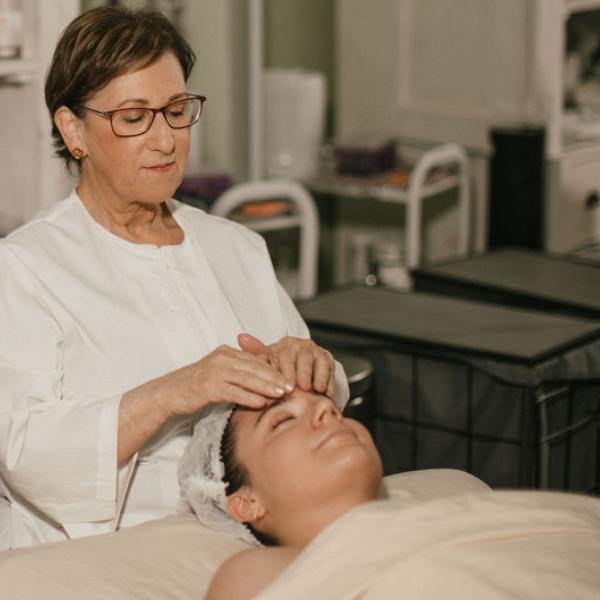This skin typing tool is used to measure the amount of melanin pigment in the skin. This helps determine skin sensitivity and treatment options.
Thomas Fitzpatrick, MD, of Harvard Medical School, created this skin typing scale inn 1975. After determining there are 6 general levels for his scale, he used it to help assess his patient's risk of sun damage and skin cancer. It is now also used to determine possible sensitivity level.
I use this scale as part of my assessment of a client’s skin sensitivity, so I can choose their treatment in my Clear Skin Boot Camp.
More than just color, the Fitzpatrick Scale takes ethnicity and the rate and severity at which one can burn or tan into account while classifying.
During the facial analysis, I often ask my clients how their skin typically reacts to the sun; I also ask if they are willing to share their ethnic background. I am then able to combine those answers, alongside the shade of their skin, to categorize their skin into their Fitzpatrick type.
Ethnicity and the ability and rate at which someone can burn/tan is just as important to consider as color, as skin shades vary widely and can change with the seasons (or a spray tan)! When a new client comes for a facial visit and I recognize their skin type may be more sensitive, I make sure they are treated with lighter topicals (at least at the beginning of the treatment series) to clear their acne.

So which Fitzpatrick Skin Types are more sensitive, you ask? More often than not, the higher the “Fitz” number, the more sensitive a person’s skin is. Although there is the benefit of more melanin to protect that person from sun damage, there are some potential issues of which to be aware.
People of Middle Eastern, Hispanic, Asian and African descent (typically Fitz types 4-6) often find their skin is more prone to *PIH, Eczema, and Keloid Scarring than those of European descent (often types 1-3), especially if it runs in their family:
*PIH is Post Inflammatory Hyperpigmentation, where the skin remains discolored even after a wound or pimple has healed. The spots may appear red or dark and can take a long time (months, even years) to fade- this is why it is helpful to try to avoid them in the first place (please stop picking!) when possible. The exfoliating peels I use during Clear Skin Boot Camp help to lighten dark patches while clearing the acne lesions.
Keloid Scarring is a form of skin growth that develops after a wounding. Most scars are flat, however keloids are hypertrophic, meaning that they are raised above the rest of the skin and can even appear like large “bubbled scars.” Although any Fitz number can scar or become pigmented, higher Fitzpatrick skin types are at a bigger risk for this more complicated type of scarring. Thankfully as a skincare pro, I am aware of this and can tailor my services and take precautions to help my clients avoid these reactions.
Eczema is an inflammatory skin condition including flareups of dry and itchy rashes on the skin. This is more common among people higher Fitzpatrick numbers, “*according to population-based studies conducted in the United States and United Kingdom. Since some acne treatments can worsen eczema, it is important to keep these differences in mind.”
What about Fitz 1-3? What should people with fair skin be aware of about their skin type? As you may guess, people with lower Fitz numbers are more prone to sun damage. Fitz 1 and 2 can almost always expect to burn when they’ve spent more than a small amount of time out in the sun. This leads to premature aging and more of a risk for skin cancers, like melanoma.
Although lighter shades of skin develop and show a burn more visibly than darker tones, ALL Fitzpatrick types benefit from sunscreen use. It is a myth that darker skin cannot burn. Burns on my friends of darker color may be less common, but they are still at risk of exposure to other UV rays that lead to premature aging and possible cancer. Sunscreen is for all people!
As an esthetician, I pay attention to skin color and ethnicity so I can be mindful of the possible reactions in a client’s skin. Schedule a consultation with me for treatment specific to your skin needs. Feel free to ask me what your Fitz number is, while you’re here!
*Thank You to FaceRealitySkincare.com and ASCP’s “Skin Deep” Magazine, and SkinCancer.Org for informing and inspiring this blog post.



